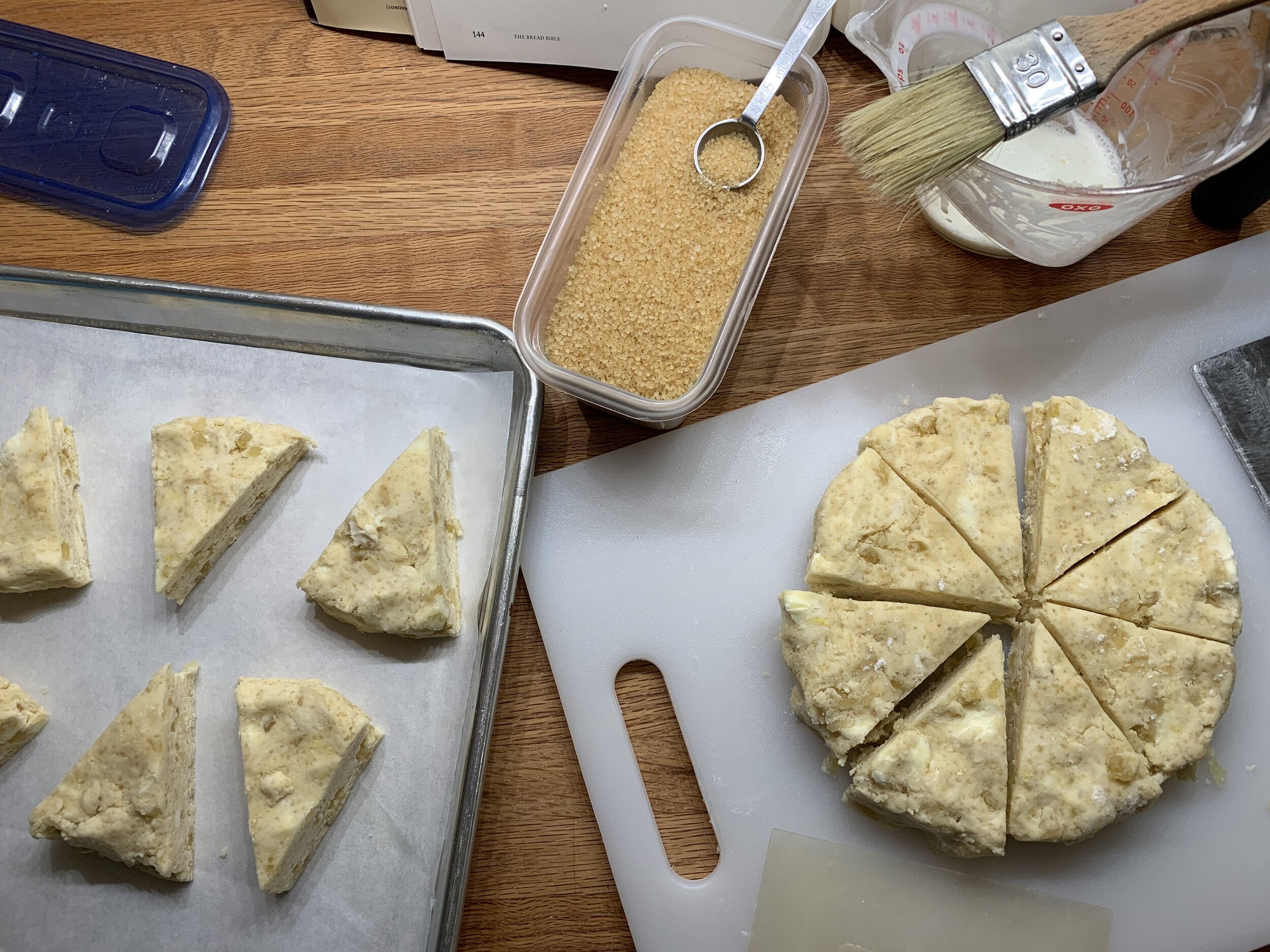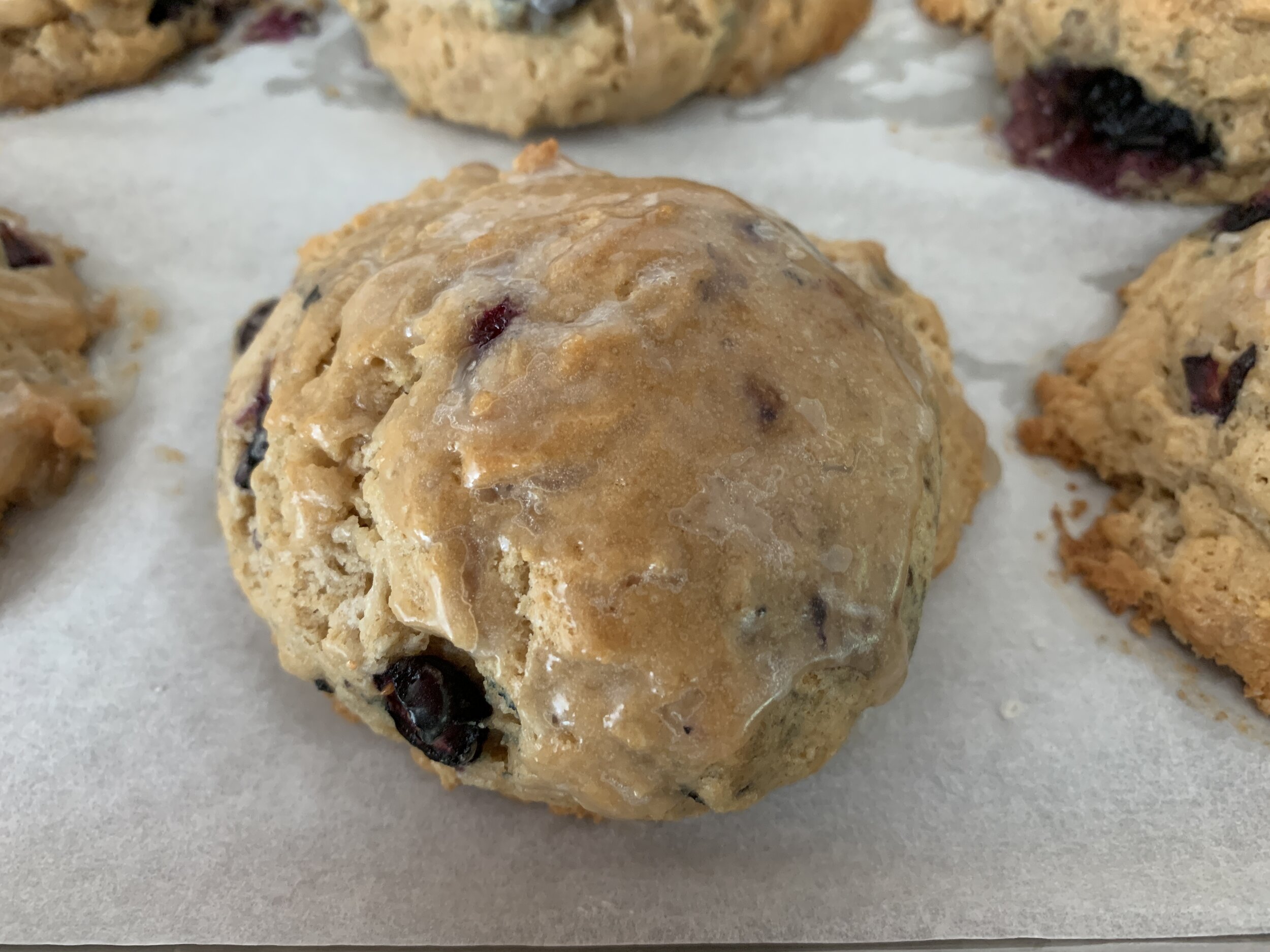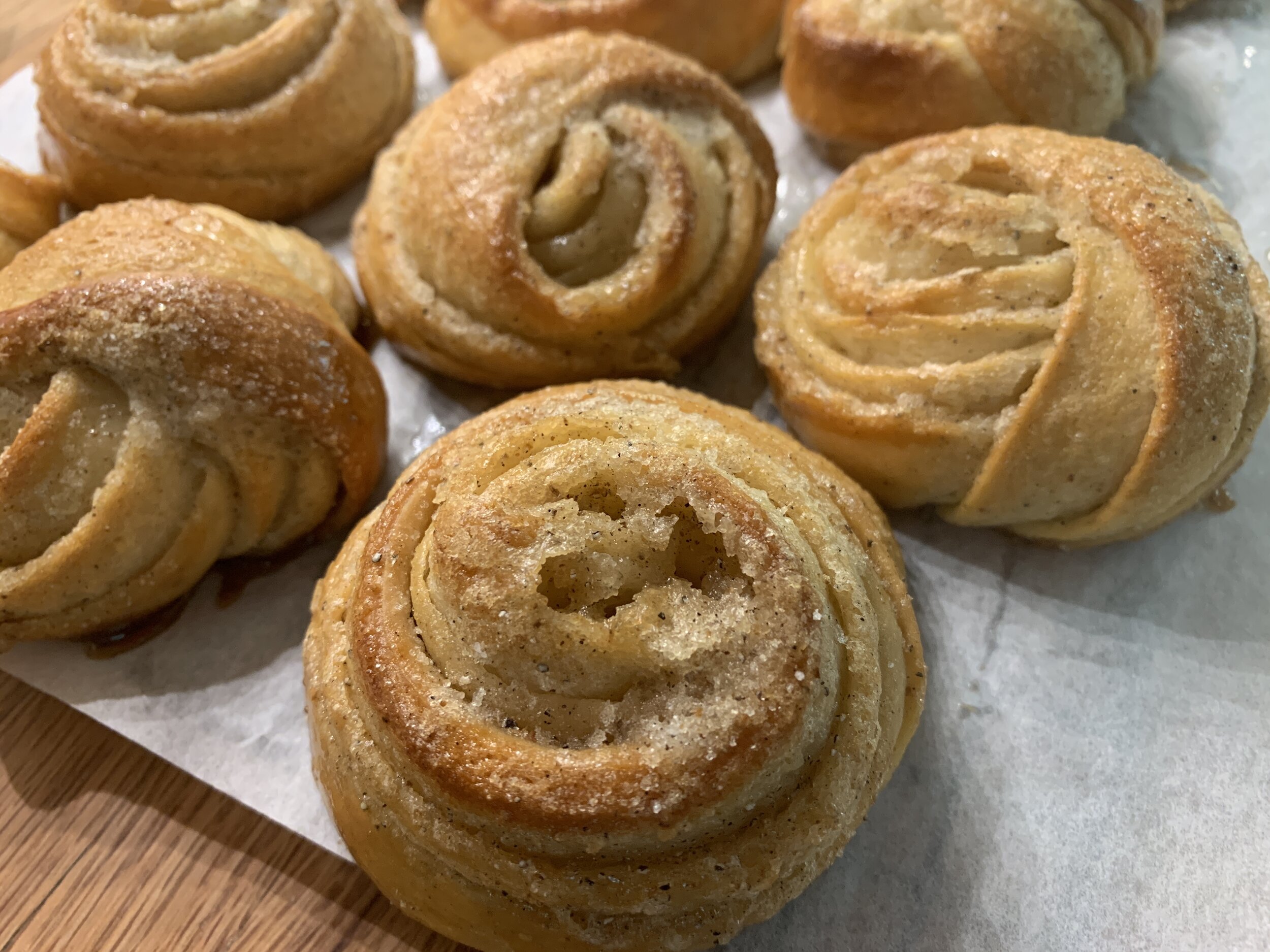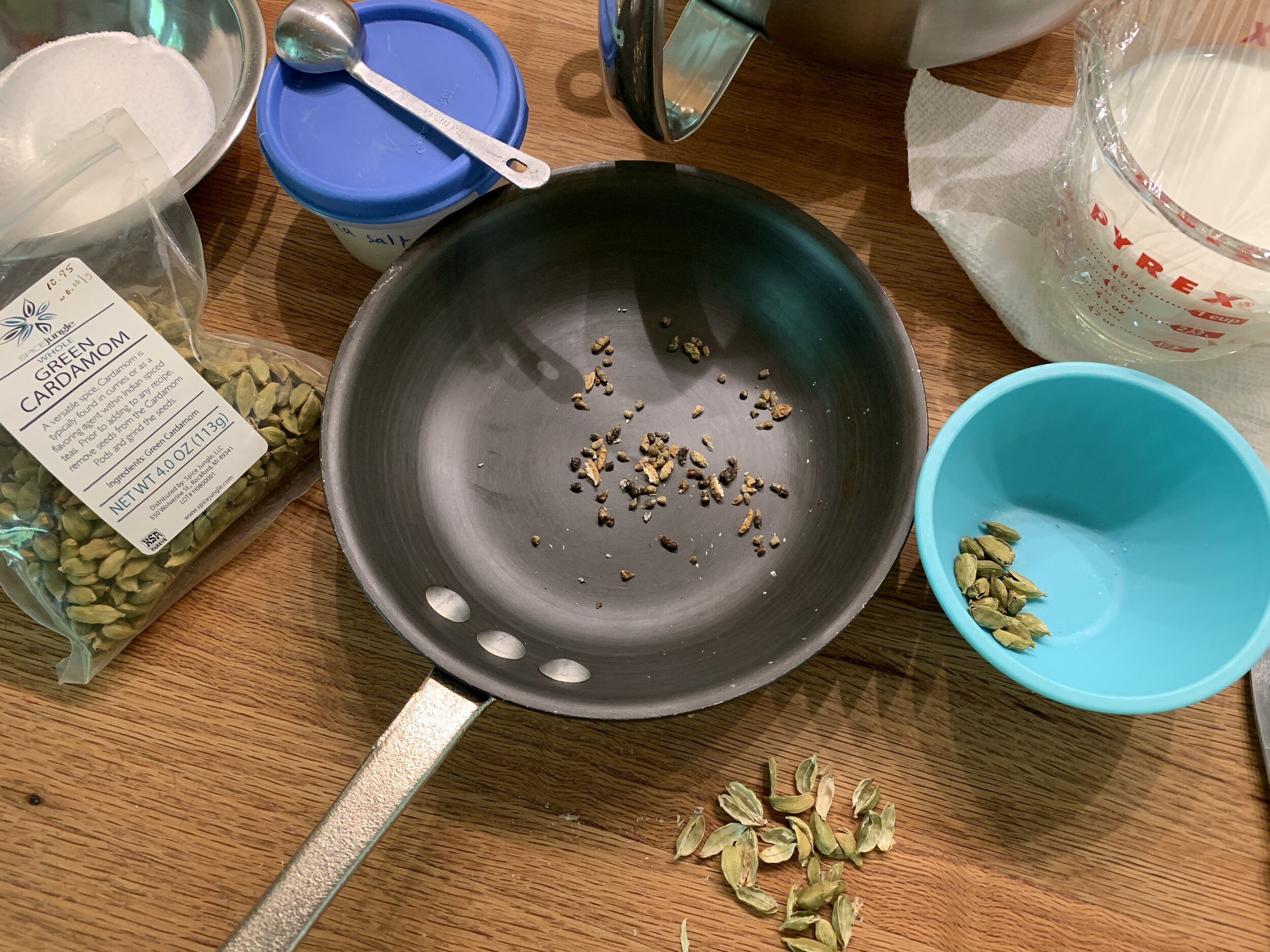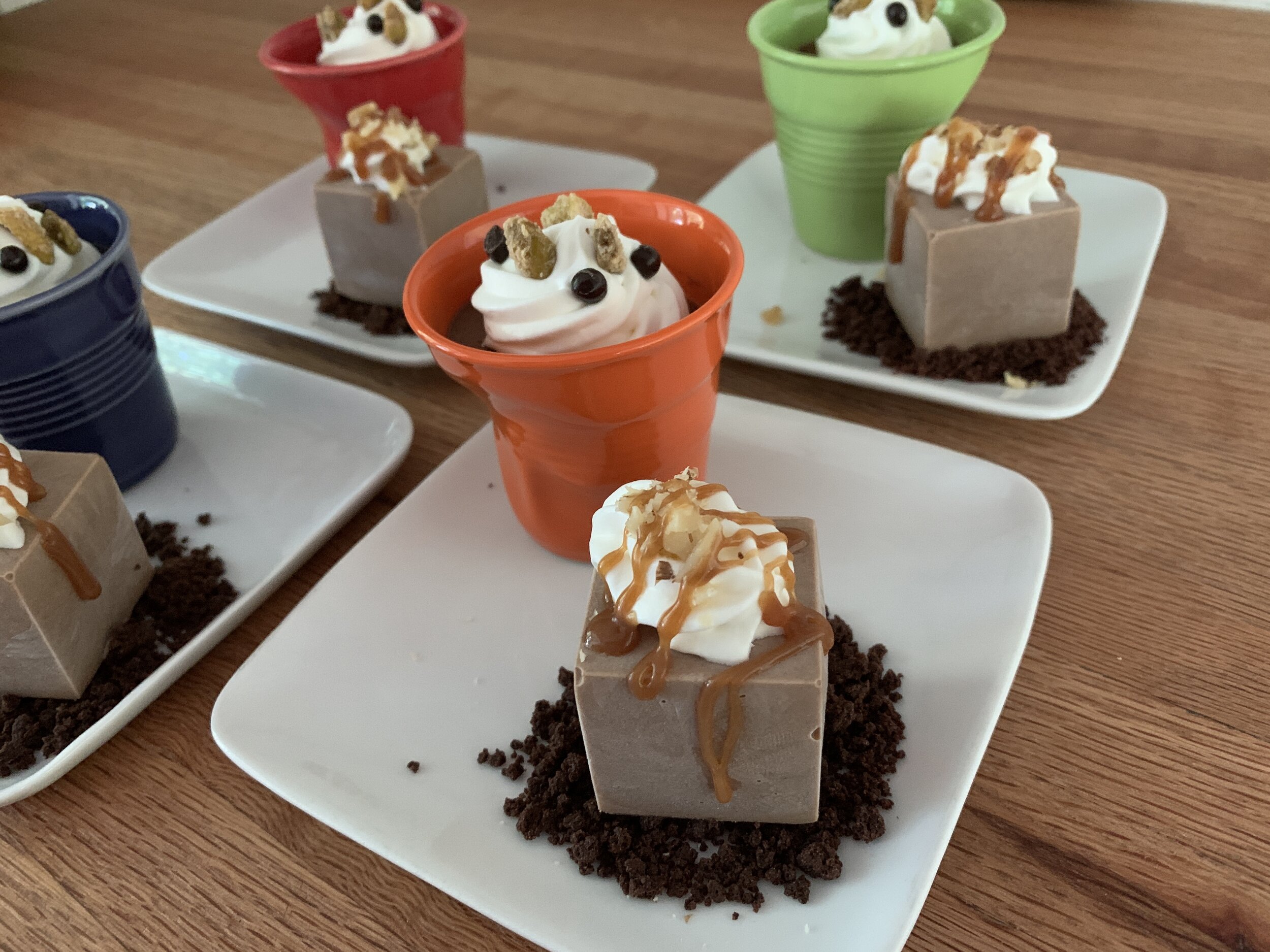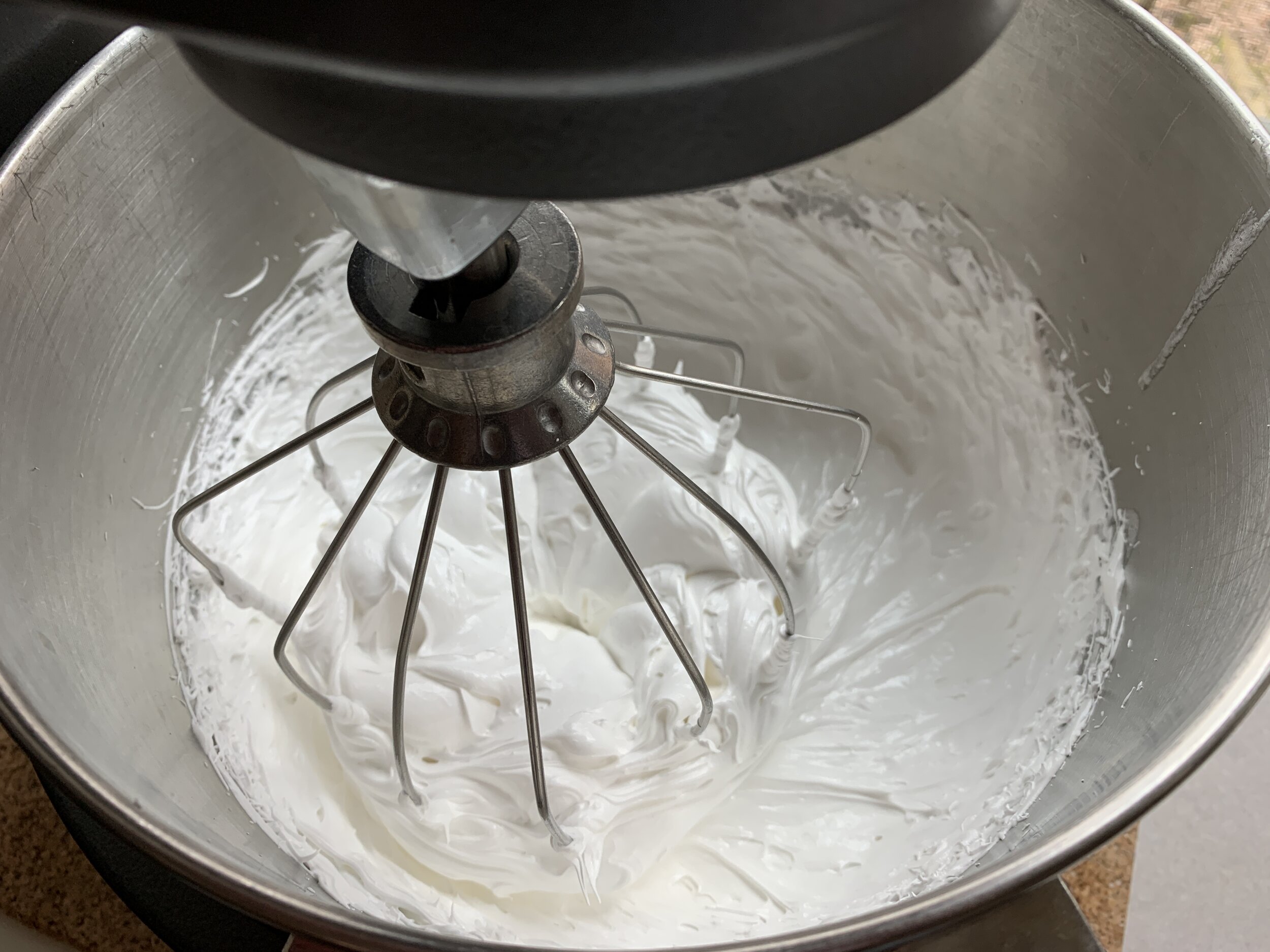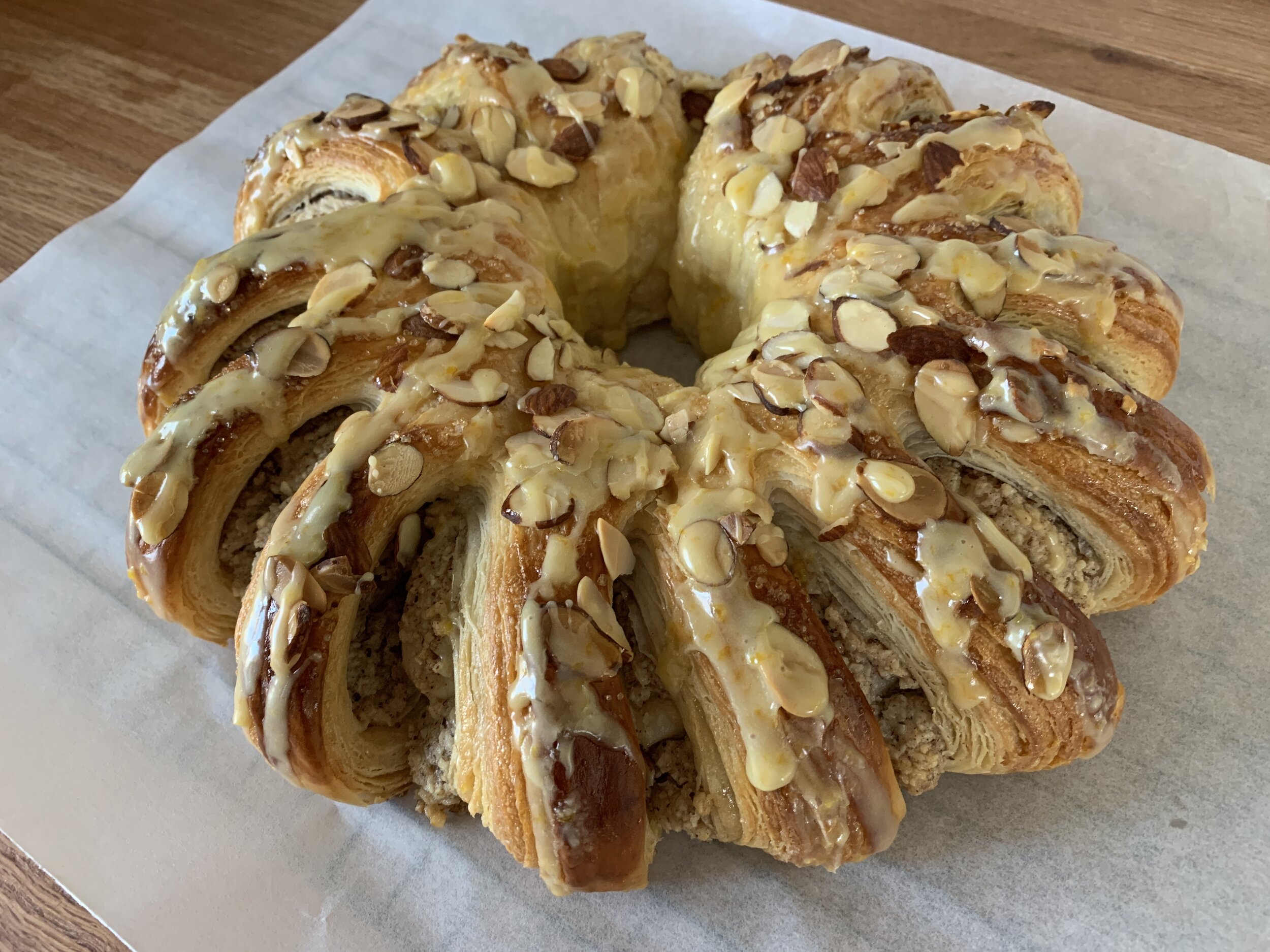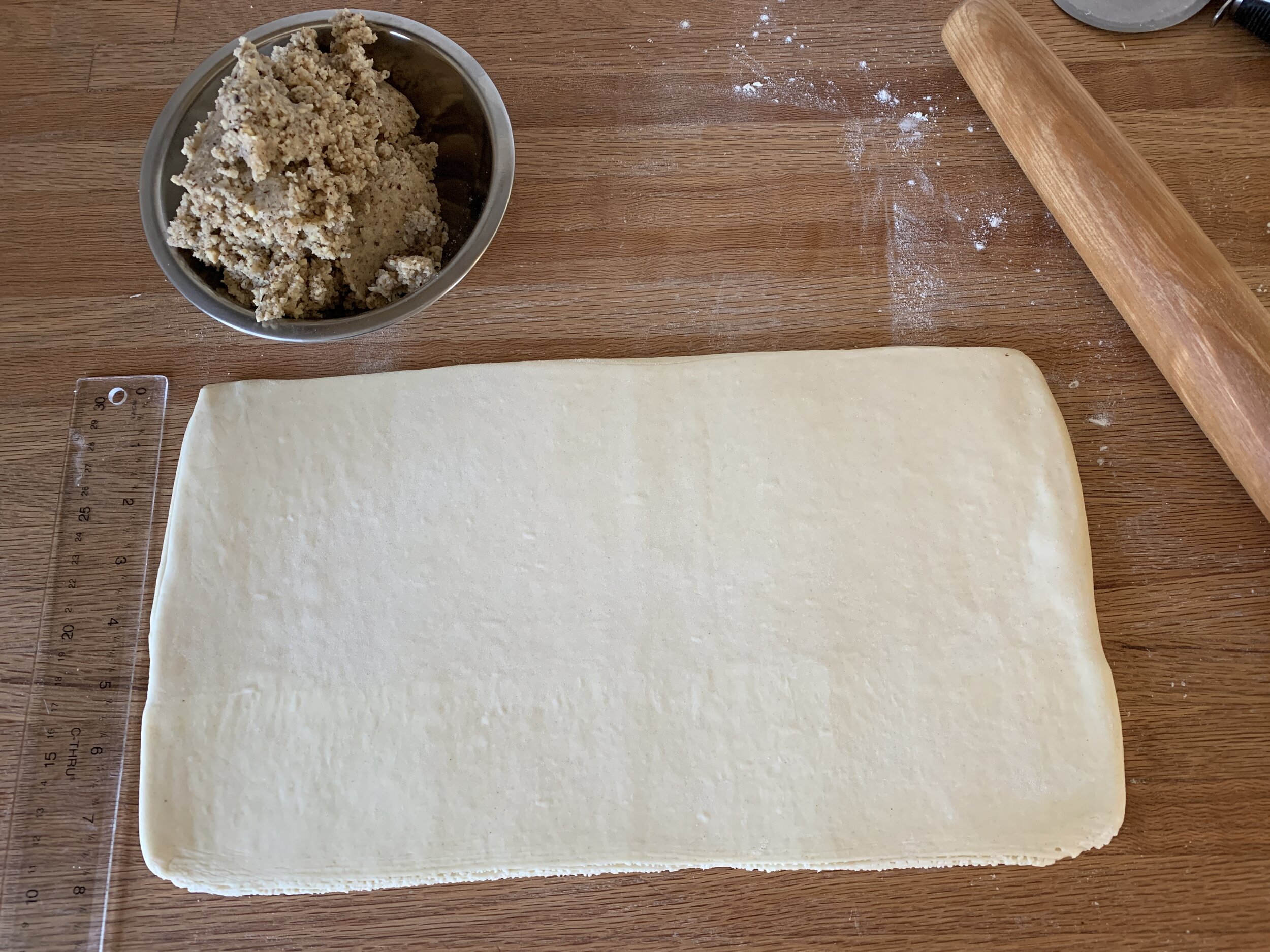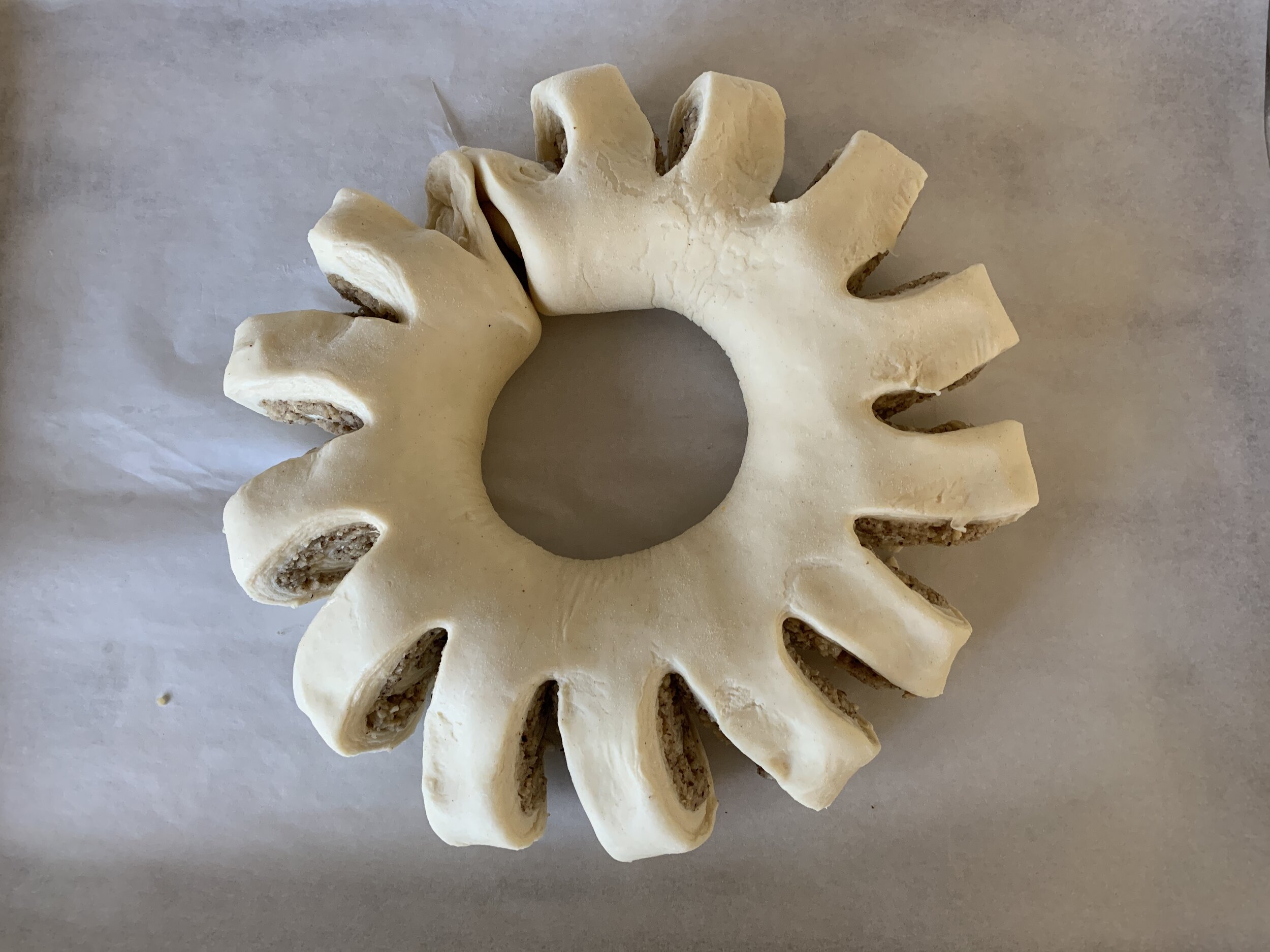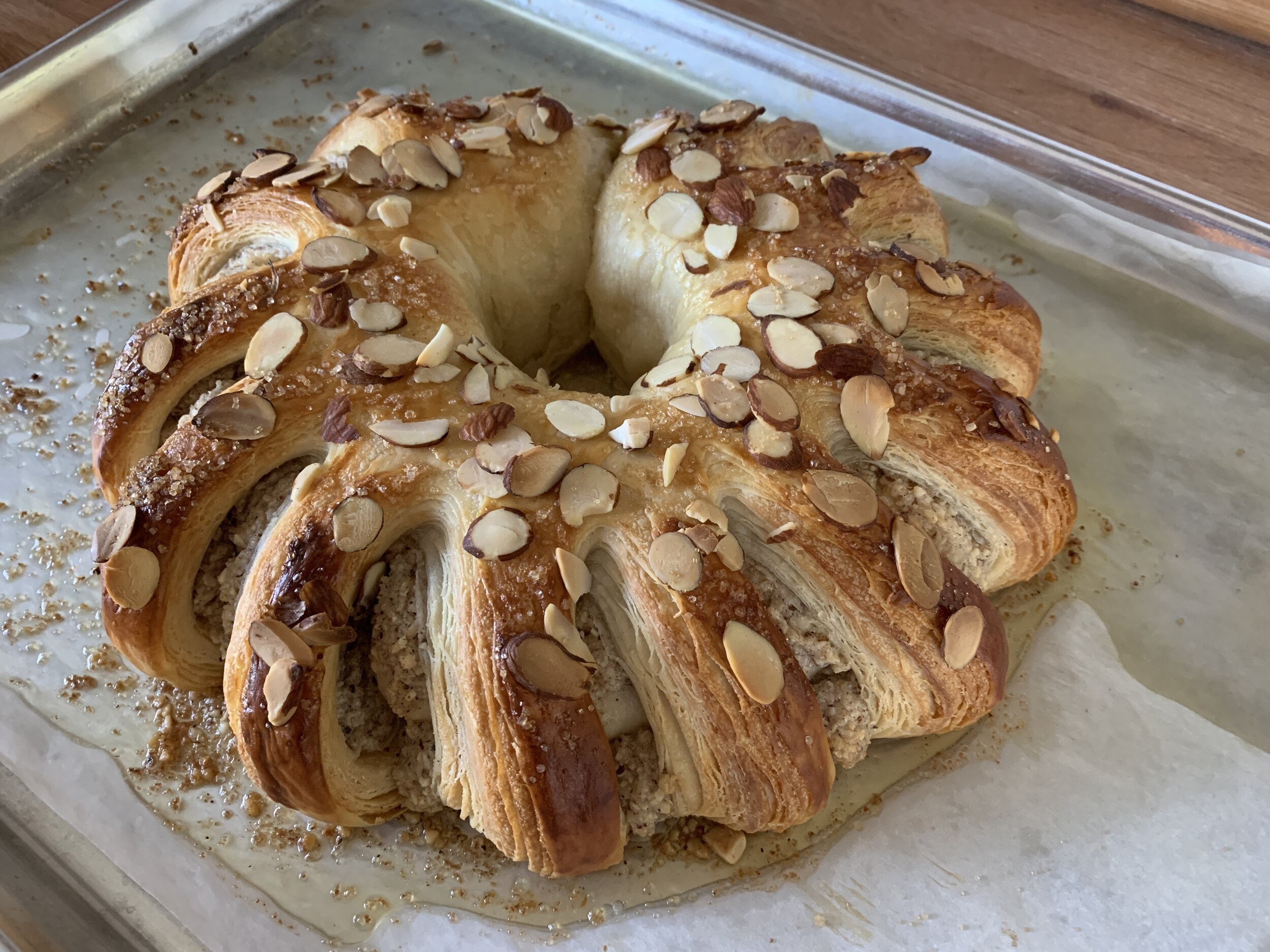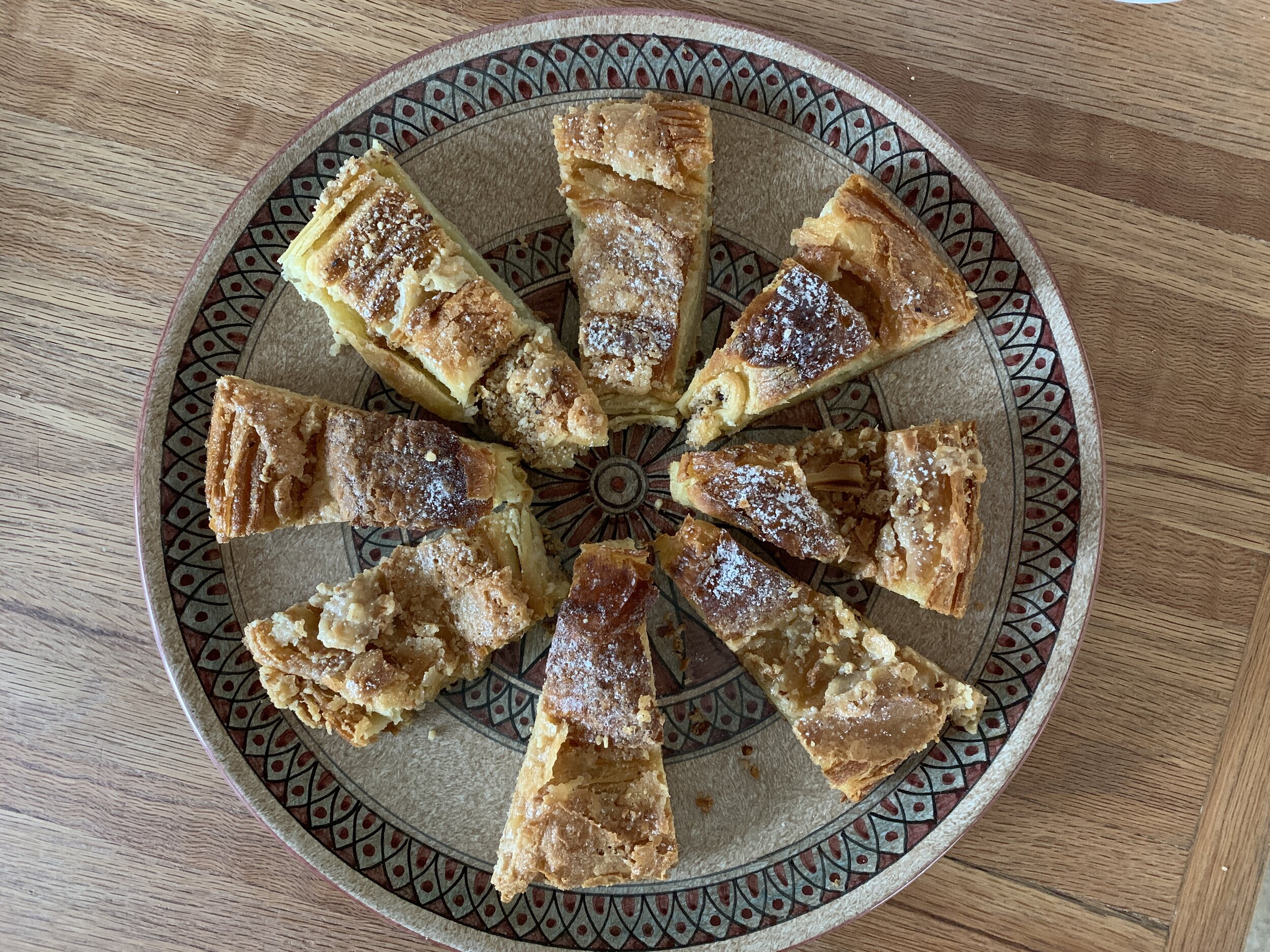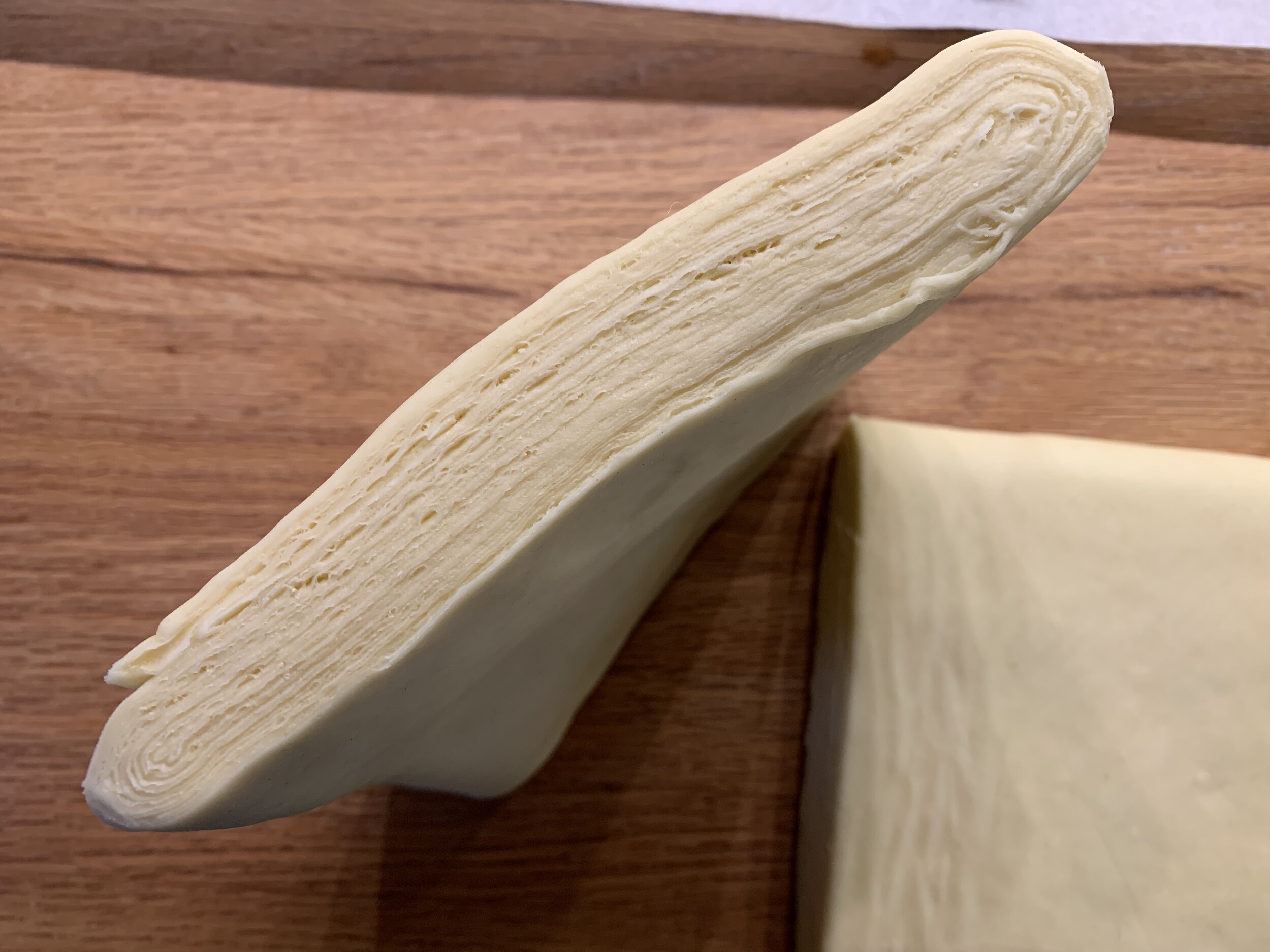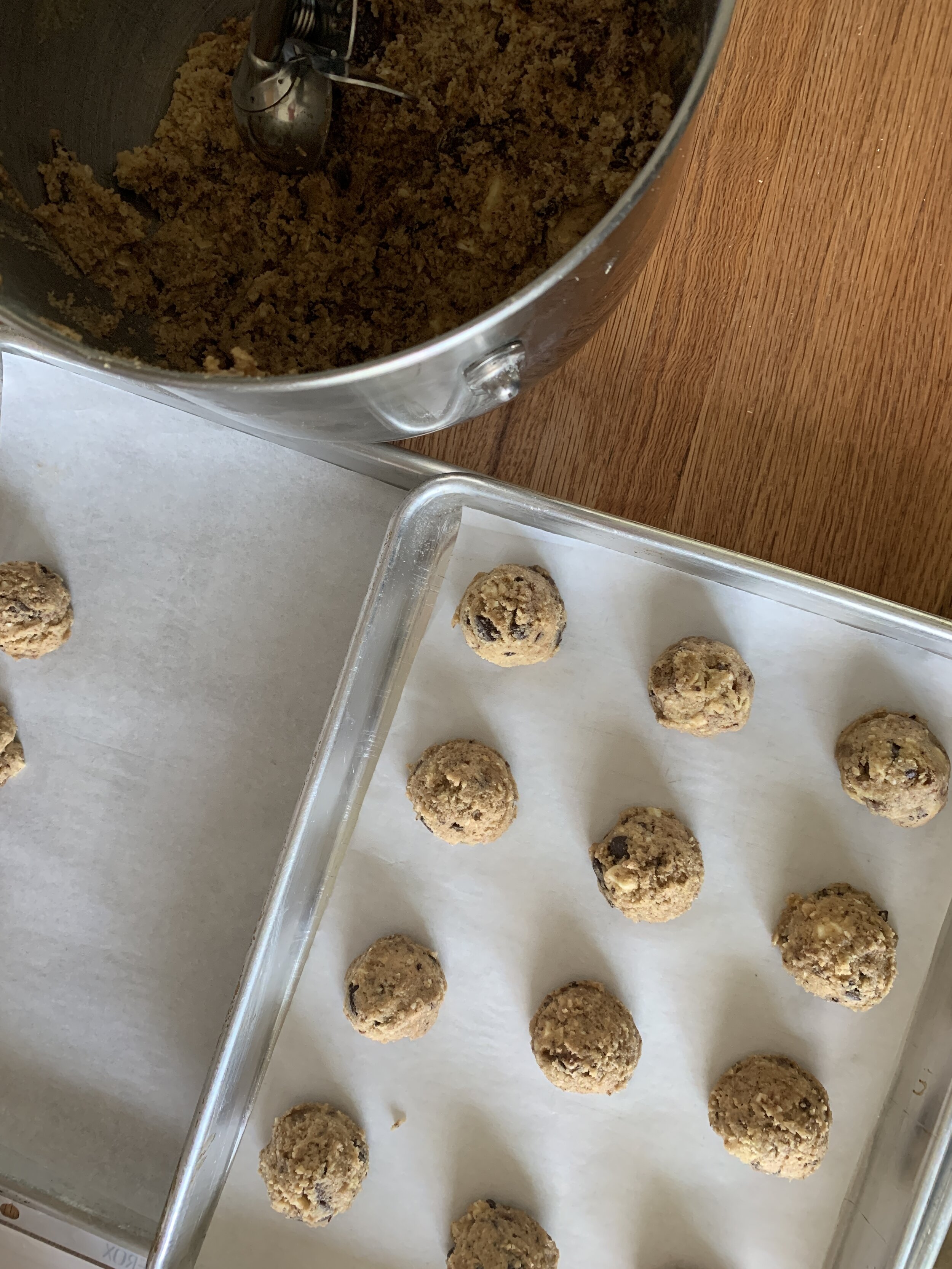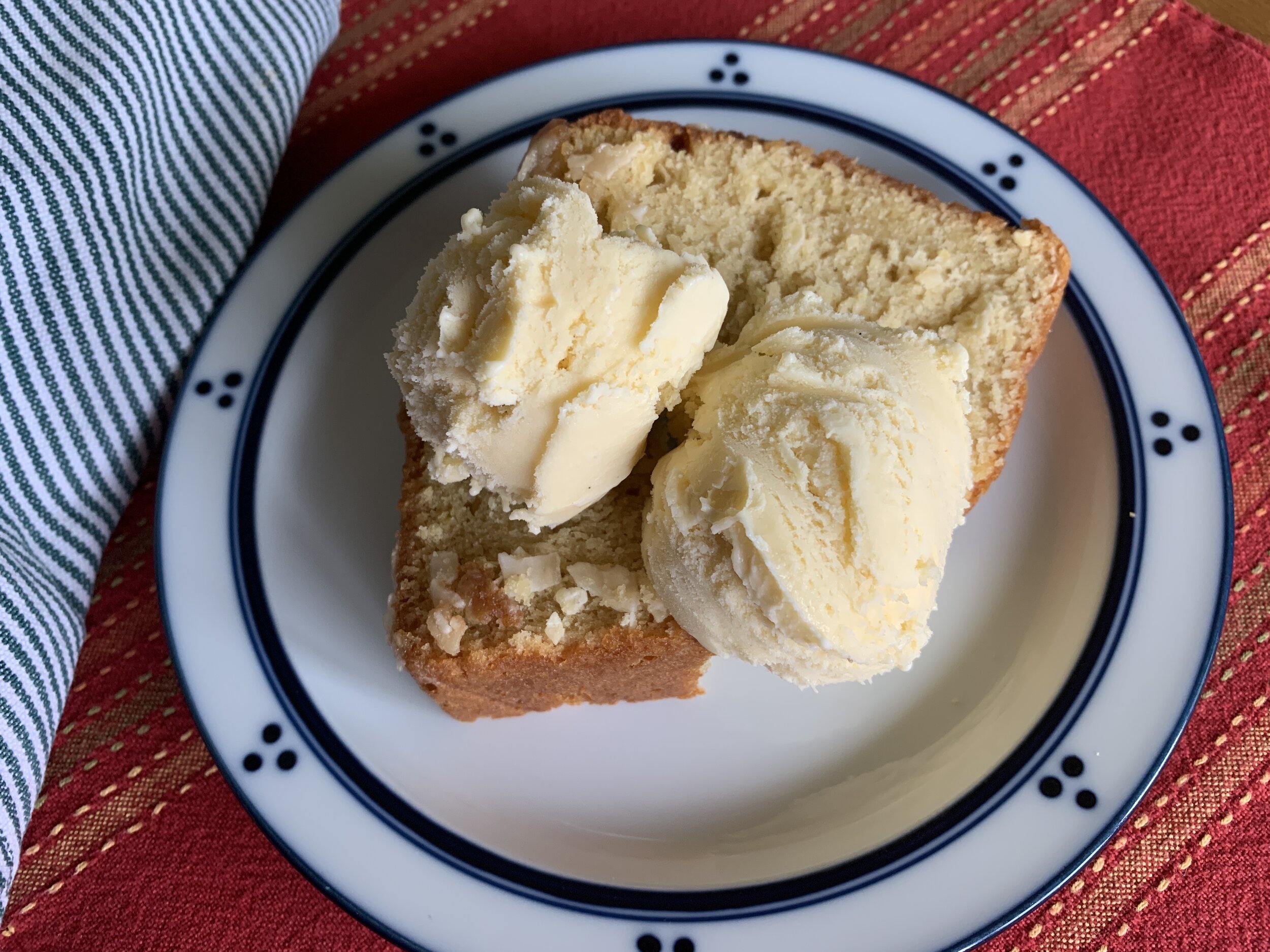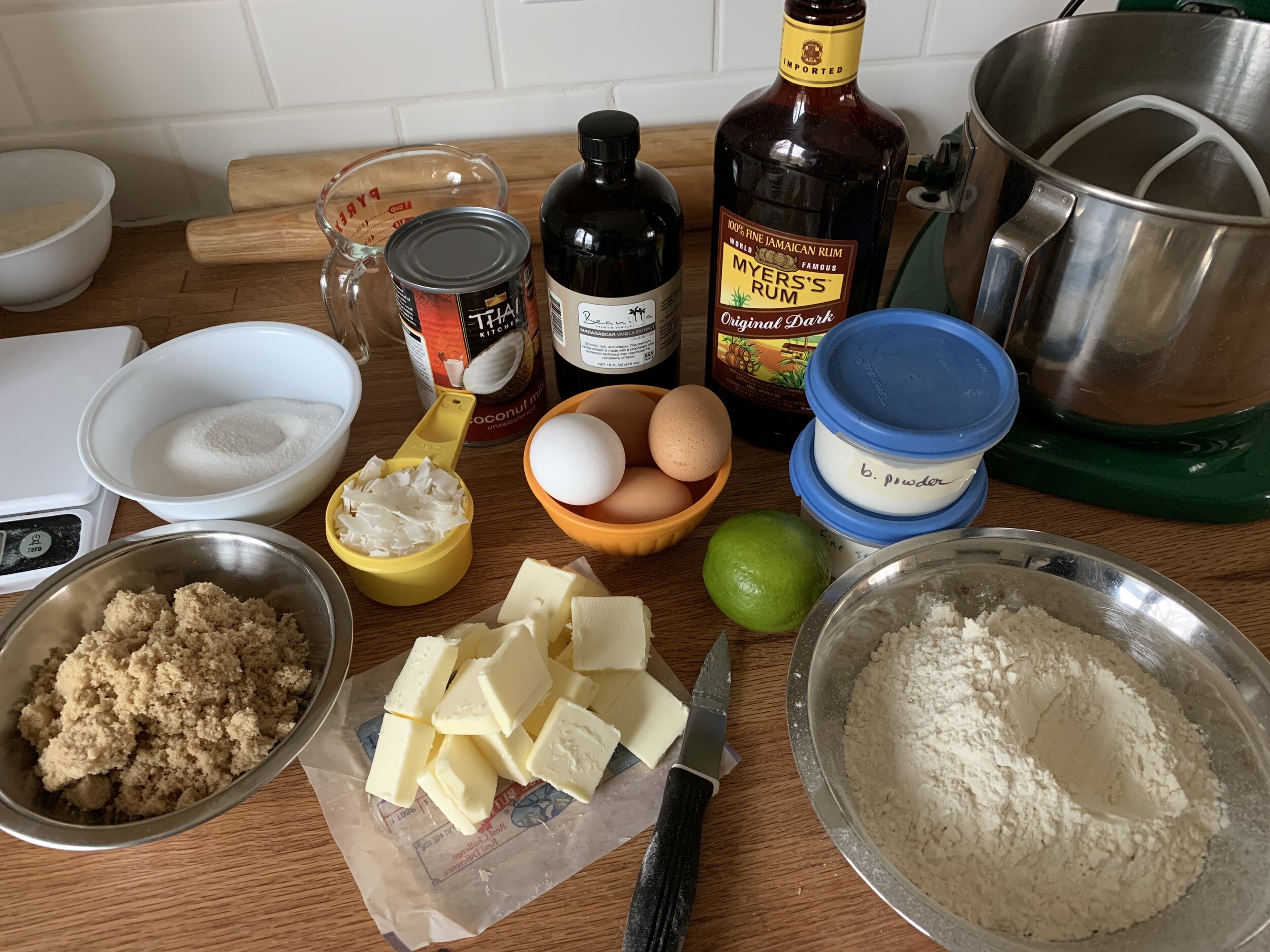Black and blue almond butter buckle
/Many years ago (14!) when I was in the middle of my year of pastry school, I discovered a recipe in Bon Appétit for an almond-plum buckle, named for the finely ground almonds that are part of the batter as well as the plum slices pressed on top before baking. I made it a couple of times back then, once with plums/blueberries/strawberries and once with cherries/blueberries. They were a big hit for the folks who were the fortunate recipients, including Steve and myself of course.
I’ve since made it periodically over the years but it’s been awhile for sure. Every now and then it comes back into my memory banks, and I must bake it again, particularly when we’re still in the throes of summer fruits season yet moving into autumn as well.
A buckle is basically a single layer cake in which the batter is topped with fruit and often a streusel topping and then baked. The fruit sinks somewhat and the batter rises around it thus referring to the buckling of the cake under the fruit.
There’s a lot written about this group of baked fruit desserts including crisps, slumps (or grunts), buckles, brown bettys and cobblers, but I’m not here today to describe how they compare in their preparation. I simply wish to share my own tweaked recipe based on the 14 year old one from BA. (Yay! I found it online so I could link you to it.)
As always, I did some basic cake recipe comparisons and made my changes based on a couple of other tasty cakes I’ve made over recent months. There’s a lot of similarity from recipe to recipe, often involving 2 sticks butter, 1 cup sugar, 2-4 eggs, vanilla, 2 cups flour, baking powder, baking soda, salt, perhaps a spice of choice or some citrus zest, some dairy like sour cream/yogurt/crème fraiche/whole milk/buttermilk, maybe some fruit involved and you’re good to go.
Here’s my recipe outlined below as well as this downloadable PDF.
Ingredients:
70 g/3/4 cup almond flour
195 g/1.5 cup all purpose flour (option to sub in whole wheat pastry flour for about a fourth of the all purpose)
1 teaspoon baking powder
1/2 teaspoon baking soda
1/4 teaspoon fine sea salt
OPT 1/2-1 teaspoon cinnamon or spice mix of choice
100 g/7 tablespoons unsalted butter at room temperature
70 g/1/3 cup almond butter
175 g/1 cup minus 2 tablespoons granulated sugar
2 large eggs, room temperature
1 teaspoon vanilla extract
1/4 teaspoon almond extract
1/2 cup crème fraiche, room temperature
1.5 cups total of mixed blueberries and blackberries (this is mainly an eyeball it decision - you want fruit sprinkled just so over the cake so that there are spots for the cake to rise up around the fruit).
The steps:
1. Heat the oven to 350ºF. Butter a 9” springform pan and place a round of parchment in the bottom.
2. In a medium bowl whisk together almond flour, all purpose flour, baking powder, baking soda, salt and spices if using.
3. In the bowl of a stand mixer fitted with the paddle cream the butter and almond butter to blend.
4. Add granulated sugar and cream on medium high until light and fluffy, 3-4 minutes.
5. Add 2 eggs, one at a time, blending well after each. Blend in 1 teaspoon vanilla extract and 1/4 teaspoon almond extract.
6. Blend in flour mixture alternating with the crème fraiche just until combined.
7. Spread batter in prepared pan, smoothing the top with an offset spatula. Sprinkle fruit evenly over the top. Sprinkle with raw sugar if desired.
8. Bake about 50 minutes until a tester in center comes out clean. Cool 20 minutes, remove from pan and finish cooling.
Ready for the oven!
The primary differences from the BA recipe are using blanched almond flour instead of finely grinding natural almonds; a reduction of butter from 227 g/8 ounces to a total of 170 g/6 ounces of unsalted butter (100 g) and almond butter (70 g) combined plus the addition of 1/2 cup crème fraiche; reduction of sugar by 2 tablespoons (~30 g). That’s pretty much it in a nutshell.
I used frozen berries for this one - if you do that, be sure to allow for 5-10 minutes more baking time to allow the center to be fully baked (nothing worse than a gooey center) and be careful not to overload the cake with fruit. I sprinkled both vanilla sugar and raw sugar on top before baking, but cinnamon sugar is an option too.
If you’d prefer a streusel topping, the easiest approach is equal weights flour, sugar, cold cubed butter sanded together to coarse crumbs to top the fruit. For this size cake 60 g of each is plenty. Remember - you can double, triple or quadruple the amounts and have a good freezer unbaked streusel stash on hand to top your favorite crisp, financier/tea cake or baked fruit tart.
The buckle served as a dessert for a Labor Day cookout at cousin Jen’s, topped with whipped cream and a few fresh berries.
Simple and delicious is always good.
Stay well, remain calm and keep baking. It helps.
The flowering crab I photographed last spring + some wild grapes















































